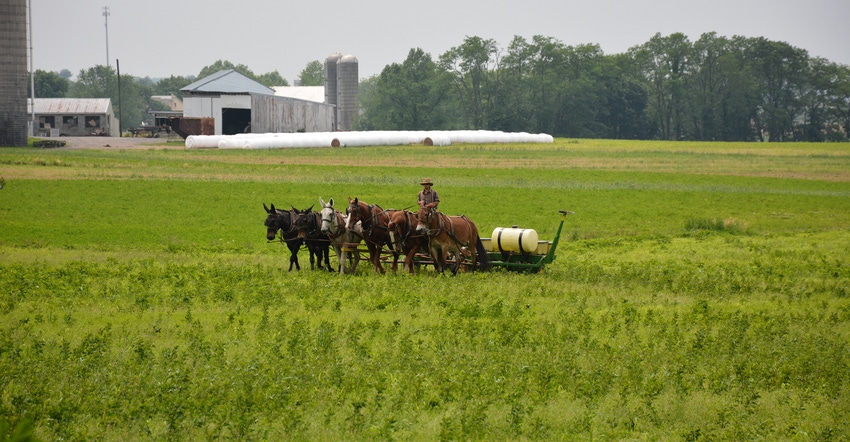
While some New York state farmers are slowly catching up from what’s been an awful start to the growing season, it’s going to be difficult for others to justify growing corn.
“I anticipate that the dairy farmers will continue to plant corn through the end of June to ensure they have enough feed for their cattle, but the grain farmers will likely report many acres of prevented planting, as it is not cost-effective for them to plant much after June 10,” writes crop reporter Colleen Cargille of Cayuga County FSA in the latest Crop Progress Report.
“Everyone has said that this is one of the worst planting years that they have ever seen," Cargille writes. "Even though the month of May 2019 did not have the most rainfall compared to previous, I think it probably had the most days in a row of rainfall, making it impossible to get in the fields to get anything planted.”
New York farmers are still way behind where they should be in planted crops. The report shows that only 31% of corn has been planted, behind the five-year average of 69%. Only 10% of the crop has emerged, behind the average of 41%.
Only 16% of soybeans have been planted, behind the 48% five-year average.
Farmers have completed 11% of first-cutting alfalfa, behind the five-year average of 37%. First cutting of “all other hay” is 14% complete, behind the five-year average of 37%.
Catching up in Pennsylvania
The report shows 54% of Pennsylvania farmers have completed first-cutting alfalfa, ahead of last year’s pace of 41%. But northeast Pennsylvania farmers are still struggling to get their crops in.
“Wet conditions continue to hamper hay making and final planting of corn and soybeans,” writes John O. Yocum, a crops reporter in Columbia County. “Wet areas of fields are causing poor growth and stand failures of corn and soybeans.”
“Another week, more rain. Saturated conditions continue to plague the northeast, making corn planting and hay harvest nearly impossible,” writes Eric Johnson, a crops reporter in Lackawanna County.
Farmers have planted 74% of the corn crop, same pace as last year but behind the five-year average of 83%. Emergence is 59%, ahead of last year’s pace but behind the average of 63%.
Soybeans are 48% planted, behind the average 65%. Soybeans emerged is 33%, which is average for this time of year.
 EMERGING CORN: According to the most recent Crop Progress Report, corn emergence, at 59%, is ahead of last year’s pace in Pennsylvania, but behind the five-year average.
EMERGING CORN: According to the most recent Crop Progress Report, corn emergence, at 59%, is ahead of last year’s pace in Pennsylvania, but behind the five-year average.

Bloom is nearly complete in apples and peaches. Meanwhile, 77% of tobacco has been transplanted or set, well ahead of last year’s pace of 38%.
Ahead of the pace in Maryland, average in Delaware
Corn planting in Maryland is nearly complete with 96% of the crop planted, ahead of the 84% average. Emergence is 96%, ahead of the 70% average.
Soybeans are 56% planted, ahead of the 45% average.
First cutting of alfalfa hay is 66% complete, which is right about average. Other hay first cutting is 55% complete, slightly ahead of average.
The apple bloom is just about complete while cantaloupes are 60% planted, slightly ahead of average. Other crops like strawberries, tomatoes and watermelons are ahead of pace for this time of year.
Sweet corn planting is 40% planting, behind the five-year average of 59%.
Delaware farmers have planted 85% of the corn crop, slightly behind average. Emergence is 67%, behind the 81% average.
Soybeans are 40% planted, which is right around average.
First cuttings of alfalfa hay are 52% complete, behind the average of 68%. Other hay is 48% complete, behind the 61% average.
Lima beans are ahead of the pace while tomato and strawberry plantings are about average.
Watermelon plantings are 70% complete, behind the 83% average.
New Jersey farmers have planted 82% of corn, which is better than average. Soybeans, at 52%, are also ahead of the pace.
First-cutting alfalfa hay is 31% complete, behind the average of 53%. Other hay first cuttings are 18% complete, behind the average 37%.
About the Author(s)
You May Also Like






